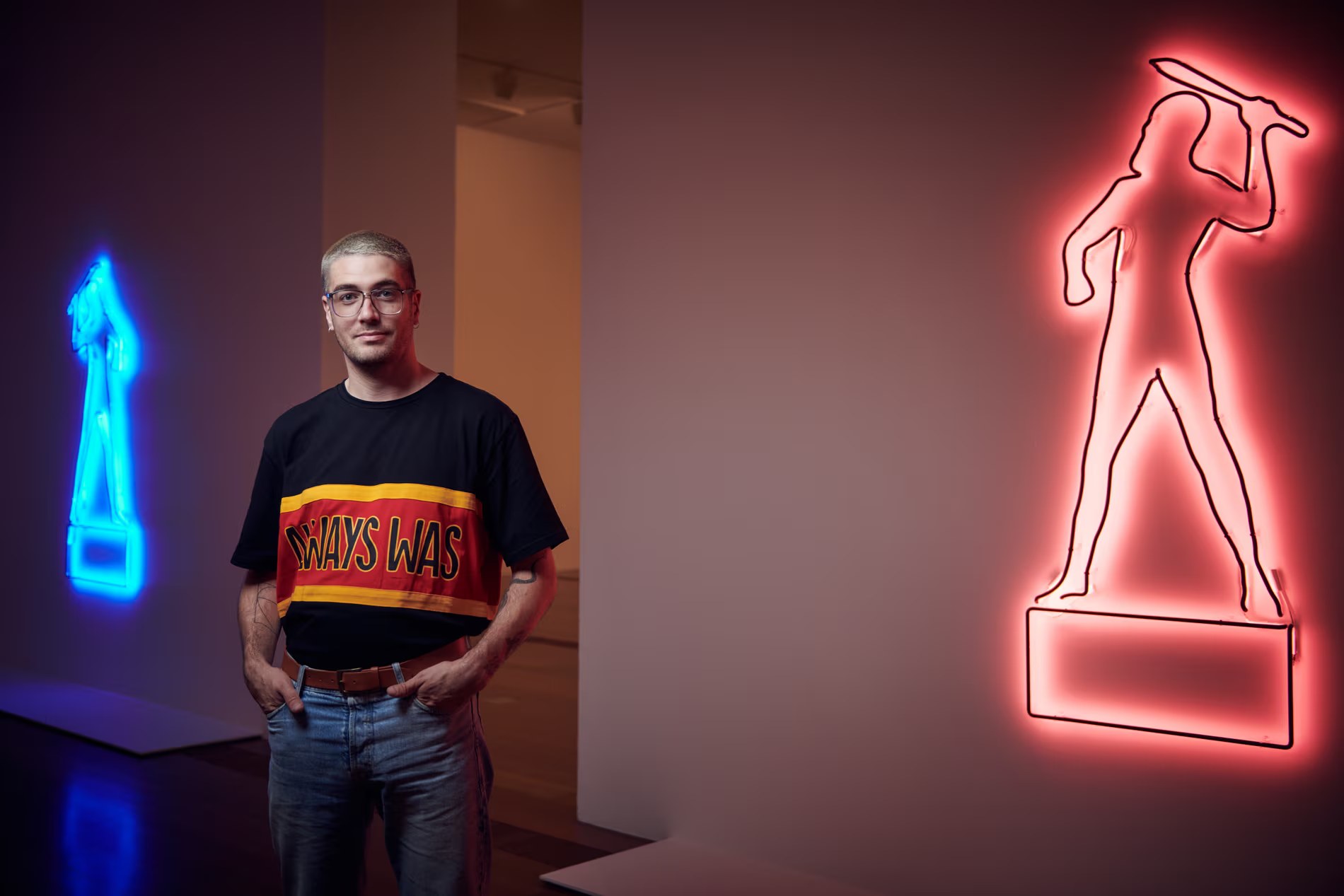“Everything in the show is a total masterpiece,” extolled Myles Russell-Cook, Senior Curator of First Nations and Australian Art at the National Gallery of Victoria. For his Gallery is offering nothing but “The best of the best in the Collection”, he added, in case of any doubt. “It’s the most ambitious exhibition of First Nations Australian art that has ever been seen overseas”, insisted Tony Elwood, the NGV’s equally ebullient Director. And Melbourne’s massive burst of enthusiasm is shared by the touring exhibition’s first host in the Americas, Kaywin Feldman, Director of the National Gallery of Art in Washington DC: “It’s a once-in-a-generation opportunity for Americans to see some of the greatest works by Australian Indigenous artists”.
Whew! Time to draw breath. For, of course, an art show is not all about size – even when it claims to offer 200 works by more than 130 artists. Let’s just note that the National Gallery show currently on in Canberra, but formerly touring to NZ and Singapore, actually had more artists (161) but fewer works (156). And the marvellous Madayin show of Yolŋu art which is now in New York on an extensive US tour, covers eight decades of intensely ceremonial art-making on bark and larrikitj, arguably a much harder sell than acrylic on canvas. Madayin also introduces American audiences to an equality of the Yolŋu language in a magnificent catalogue – a publication the NGV will need to match to justify its terrific claims. But then Madayin had the advantage of being coordinated by the Buku-Larrŋgay artists themselves, working with the Kluge/Ruhe Collection in Virginia, the largest outside Australia.
And let‘s not forget that Washington DC has already seen a fine showing of Aboriginal women artists, Dreaming Their Way back in 2006, pioneering serious Indigenous art showing in the US in the 21sat Century, later built upon by Dennis Scholl’s series of three curated exhibitions that toured as contemporary art rather than ethnography. For, of course, the Asia Society in NY started it all off with Dreamings curated by Peter Sutton back in 1988, inspiring several serious American collectors, whose assemblages are now to be found in Museums from Seattle to New Hampshire.
Despite its title, The Stars We Do Not See – surely a reference to the Gulumbu Yunupingu’s celestial barks – you can’t put on such an ambitious exhibition today solely of classical Aboriginal art from remote Australia. Please note Russell-Cook’s priorities in the first sentence from the NGV promotional video: “First Nations artists are at the forefront of the expression of politics and a deep connection to identity and place. Audiences are going to leave this show with a totally new understanding of what Indigenous art is. Issues such as Indigenous deaths in custody will be particularly resonant for North American audiences”.
The simplest expression of politics lies in works by Richard Bell and Reko Rennie – though if the NGV works hard enough, they seem to be able to find politics in the multiple Dreamings that the Tjapaltjarri brothers, Tim Leura and Clifford Possum thought they were describing in Spirit Dreaming through Napperby Country (1980). The NGV is apparently confident that “the work chronicles the dispossession of the Anmatyerre people when their lands were taken over to become vast cattle stations”.
I suspect the brothers were actually prioritising “a deep connection to identity and place”.
Which is political, of course – though not in a crass Parliamentary sort of a way. Was Emily Kngwarreye being political when she sat down in front of an 8 metre-wide canvas to undertake her Anwerlarr Anganenty (Big Yam Dreaming)? Or was she just throwing down 85 years of her understanding of the significance of the yam plant and the metaphor of its complex root system to the survival of her people over the millennia?
And is size – of the canvas this time – actually a mark of quality? For the NGV is including three collaborative works: one 5m-wide painting by a group of aging Kaiadilt artists depicting Bentinck Island, from which they were removed in the early 40s, always to memorialise it; another is the 7 metre-wide painting of the salt lake Ngayartu Kujarra, or Lake Dora by a group of 12 women from Martumili, Western Australia. Interestingly, Tony Ellwood, who has worked in a remote art centre, chose this to pose in front of when announcing this exhibition, a painting with what appears to be a huge blank hole in the middle. And then there’s the 100 metre woven fish fence from 13 women in Maningrida requiring 35,000 hand-harvested threads and two years work.
Will that even feel like art, I wonder, to a country that has recently hailed Brisbane provocateurs, proppaNOW as winners of the Jane Lombard Prize for Art and Social Justice?
Following its global premiere on 18 October 2025 in Washington, The Stars We Do Not See will tour to venues across North America for three years, including Denver Art Museum, Colorado; Portland Art Museum, Oregon; Peabody Essex Museum, Massachusetts; and the Royal Ontario Museum in Toronto, Canada. And it’s enviseaged that the National Gallery of Art will reciprocate.
We’ll miss those “total masterpieces” at home! And we hope that the Americans can appreciate that a few pen-and-ink squiggles by Kunmanara (Wawiriya) Burton representing the roots of stories that she would often translate into glorious canvases are, indeed, masterpieces!
In an update, curator Myles Russell-Cook will only be partially around when The Stars We Do Not See goes to Washington as he’s just been appointed Artistic Director & CEO of another Melbourne intstitution, the Australian Centre for Contemporary Art (ACCA). He was at the NGV for eight years.




